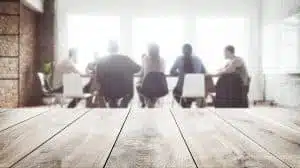True paradigm shifts represent drastic, sometimes uncomfortable change. It is not surprising, therefore, that these events can be met with resistance as organizational leaders step outside their comfort zones (Pink, 2005).
Definitions
Baker (1992) defined a paradigm as “a set of rules and regulations that establishes or defines boundaries and tells you how to behave inside those boundaries”.
The purpose of a boundary is to maintain relationships with others in a way that is beneficial to the performance of a function, whereas the purpose of a barrier is to shut down relationships. Boundaries seek to establish open channels of communication, barriers remove any chance of this happening.
Crisis
When we’re faced with a crisis, our boundaries can harm our responsiveness. During Covid-19, a lot of companies suddenly lost 25% or more revenue due to government-imposed lockdowns. Some stuck to their boundaries and relied on government bailouts. Others shifted into areas where they felt they could make a difference. And many did. They shifted the paradigm by taking down their (self-)imposed boundaries.
Red Monkey
As the world is changing ever faster, organizations, companies, and schools need to increase the pace of learning and innovation drastically. However, today’s organizations and companies are not capable of creating an environment that enables and energizes rapid and transformative innovation. Schools have unintentially transformed talented people into passive conformists.
Jef Staes described the state most organizations and companies are in, what is wrong in our system, and what we need to do to shift the paradigm. Staes: “If you put fences around people, you’ll get sheep”. As a consequence, 80% of employees are not engaged or even ‘hate their jobs’.
Roles versus functions
We all play different roles in our lives. If a person is a teacher at a school, the position demands social behavior that is different from being a husband or father. These roles are parts of our identity. Yet different roles are associated with different responsibilities, duties, and functions.
For change to happen we have to temporary part from business-as-usual and the restricted functions associated with it. As we shift into a state of change, we need to consider roles like change practitioners, sponsors, people managers, project managers, and impacted employees. A sponsor, for instance, must actively and visibly participate throughout the life of the project, build a coalition of support, and communicate directly with employees. Functional barriers greatly deminish a firm’s capacity to drive change.
Crossing the Boundaries
In times of change, boundaries have to be broken. You simply can’t respect the boundaries and expect change to happen at the same time. Only after the dust has settled and a new solid state has emerged, new boundaries will need to be set to increase employee productivity and operational efficiency.























